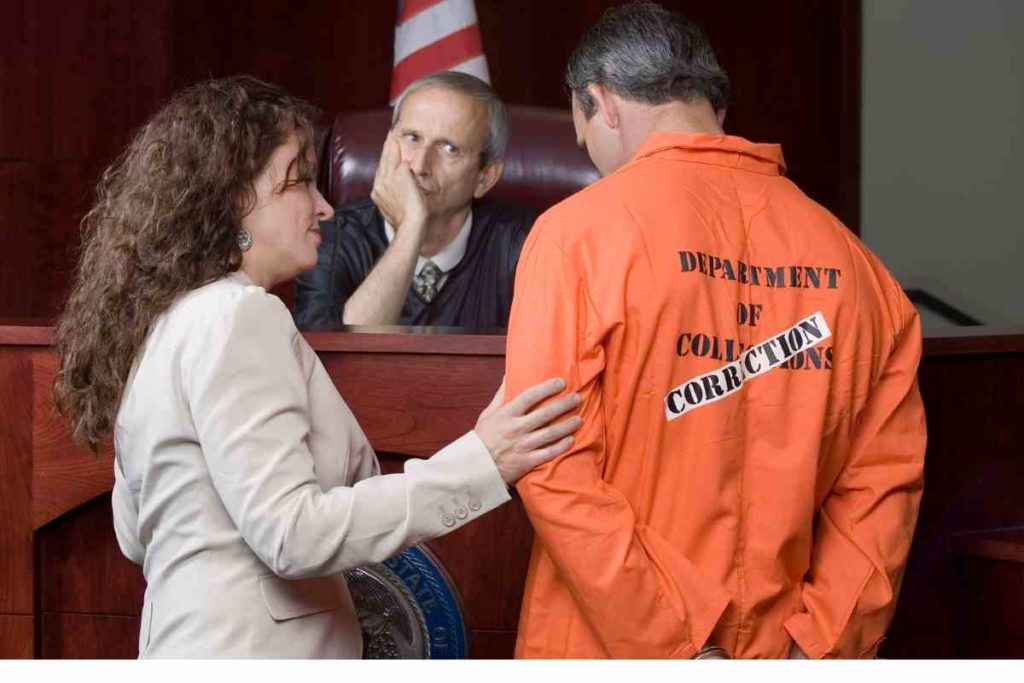A Deep Dive into the US Criminal Justice System

A Deep Dive into the US Criminal Justice System:- The US Criminal Justice System is an intricate web of laws, agencies, and processes designed to maintain societal order and protect citizens. It’s essential to break it down and examine each component to grasp its intricacies.
The Foundational Principles
The US Criminal Justice System is anchored on three main principles:
- Presumption of Innocence: Every individual is considered innocent until proven guilty.
- Right to a Fair Trial: Each person is entitled to a just and unbiased trial.
- Protection from Double Jeopardy: No one should be tried twice for the same offence.
Components of the System
Law Enforcement Agencies
These entities enforce the law, prevent crimes, and apprehend those who violate them. Examples include the FBI, state troopers, and local police departments.
Courts
Courts interpret and apply the law. They comprise:
- Municipal Courts: Handle minor offences.
- State Courts: Deal with state law breaches.
- Federal Courts: Address federal law violations.
Correctional Facilities
These institutions aim to punish, rehabilitate, and deter offenders. They vary from local jails to federal prisons.
The Criminal Justice Process
From the moment a crime is reported to the post-trial phase, the system follows a set process:
- Investigation and Arrest: Law enforcement investigates and arrests the suspect if there’s sufficient evidence.
- Charging: Prosecutors review evidence and decide whether to press charges.
- Initial Appearance: The accused is informed of the charges and their rights.
- Plea Bargaining: Deals can be struck to plead guilty in return for reduced sentences.
- Trial: The case goes to trial if no plea deal is agreed upon.
- Sentencing: If found guilty, the judge decides the punishment.
Challenges Faced by the System
Racial Disparities
There’s a disproportionate representation of minority groups, particularly African Americans and Hispanics, in prisons.
Overpopulation
Many prisons and jails are overcrowded, leading to inadequate living conditions and increased tensions.
Also, Read Family Law in America: The Intricacies of Divorce and Custody
Recidivism
A significant number of released inmates return to criminal behaviour, posing a challenge for rehabilitation efforts.
Mental Health
The system grapples with addressing the needs of offenders with mental health issues, often lacking adequate resources to do so.
Potential Reforms
To address the challenges, several reforms have been proposed:
- Elimination of Mandatory Minimums: Allowing judges more discretion in sentencing.
- Rehabilitation over Punishment: Focusing on rehabilitating offenders rather than mere incarceration.
- Restorative Justice: Engaging victims, offenders, and the community in healing.
- Mental Health Initiatives: Providing better care for inmates with mental health needs.
The Evolution of the US Criminal Justice System
Over time, the US Criminal Justice System has undergone significant changes, adapting to societal needs, emerging challenges, and a deeper understanding of justice and human rights.
Historical Context
The roots of the US Criminal Justice System can be traced back to the British common law system, which was adapted and modified according to American societal needs. Over the centuries, significant events, like the Civil Rights Movement, have played a pivotal role in shaping the system.
Technological Advancements and Their Impact
Modern technology has revolutionized law enforcement and judiciary proceedings. DNA testing, surveillance cameras, and digital forensics have transformed the way evidence is collected, analyzed, and presented in court.
Juvenile Justice System: A Special Focus
Unlike adults, juveniles have a separate system, emphasizing rehabilitation over punishment. The idea is to give young offenders a second chance at integrating into society successfully.
The Role of Public Perception
Public opinion plays a crucial role in shaping policies. High-profile cases, media coverage, and popular culture (like TV shows and movies) significantly influence the public’s perception of the criminal justice system.
Private Prisons: A Controversial Aspect
In recent years, the privatization of prisons has sparked intense debate. Proponents argue that it’s cost-effective, while opponents raise concerns about profit motives possibly compromising inmate welfare.
Future of the US Criminal Justice System
With societal shifts, evolving challenges, and the constant strive for a more just society, the future holds:
- Greater Emphasis on Restorative Justice: Shifting focus from punishment to reconciliation.
- Increased Use of Technology: Leveraging AI and machine learning for predictive policing and evidence analysis.
- Focus on Community Policing: Building stronger relationships between law enforcement agencies and communities to foster trust and collaboration.
The Interplay Between Policy, Politics, and the US Criminal Justice System
The US Criminal Justice System does not operate in a vacuum. It’s deeply influenced by the country’s political landscape and the policies enacted by lawmakers.
The Political Influence
Elected officials, from local sheriffs to the President, can impact the direction and priorities of the justice system. Their stances on crime, rehabilitation, and punishment often reflect the sentiments of their voter base.
- Tough on Crime Era: In the late 20th century, politicians championed stricter sentencing laws and three-strikes rules, leading to a surge in prison populations.
- Modern Reforms: There’s a growing bipartisan consensus around criminal justice reform, focusing on reducing incarceration rates and promoting alternative sentencing.
Policy Shifts and Their Implications
Policies, often resulting from political campaigns, can have long-lasting effects on the system.
- Drug Policies: The “War on Drugs” initiated in the 1980s led to a sharp increase in arrests for drug offenses, contributing significantly to prison overpopulation.
- Bail Reform: Recognizing the undue burden on low-income individuals, many states are re-evaluating bail practices to ensure they’re fair and just.
Role of Advocacy Groups
Various non-governmental organizations and advocacy groups work tirelessly to highlight issues within the system and push for necessary reforms.
- Innocence Projects: These organizations work to exonerate those wrongly convicted, often using DNA evidence.
- Prison Reform Advocates: Groups like the ACLU emphasize the need for humane prison conditions, adequate medical care, and inmate education and rehabilitation opportunities.
The Media’s Role in Shaping Perceptions
The media wields considerable power in shaping public opinion about crime, criminals, and justice.
- Sensationalism: High-profile cases often receive extensive media coverage, which can sometimes sway public opinion and even potentially influence judicial outcomes.
- Documentaries: In-depth documentaries and series have shed light on systemic issues, wrongful convictions, and other challenges, prompting public discussions and demands for reform.
Preparing for the Future
Continuous assessment is crucial to ensure that the US Criminal Justice System remains just and effective. Engaging with community leaders, understanding global best practices, leveraging advancements in technology, and listening to the voices of those directly impacted by the system will be essential in charting the way forward.
Conclusion
The US Criminal Justice System is a complex mechanism aiming to strike a balance between upholding the law and ensuring individual rights. While it has its challenges, understanding its nuances is crucial for informed discussions on potential reforms.







1 thought on “A Deep Dive into the US Criminal Justice System”